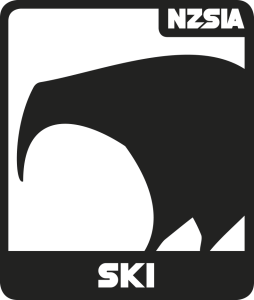Advanced Parallel Turns
 What, Why, How
What, Why, How
What
Advanced parallel turns are a stepping stone from basic steered turns to more dynamic ski performances. In an advanced parallel turn, earlier edge and pressure become more dominant, allowing the skier to grip and guide the skis through the whole turn. This is due to the combination of greater speed and stronger lateral and forward movements towards the outside ski. This combination creates greater pressure to the outside ski earlier in the turn, allowing controlled steering throughout the turn.
Why
More dynamic skiing will open up new possibilities for students. When achieved it is a strong and fun way to ski.
How
Start by getting your student to feel the inside edge of the outside ski early in the turn. Develop student understanding of how the CoG moves inside the turn relative to the BoS, and develop active edging through leg movement to tip skis on to edge at the very start of the turn.

 Technical Know-how
Technical Know-how
What’s New
Earlier edging with controlled steering will set the skier up to utilise the ski design and become more dynamic.
Performance Tips
Body: Focus on using inclination of the legs at the beginning of the turn. This helps diverge the path of the COG further inside the BOS.
Turn phases: Develop greater amounts of edge with patient steering through the create phase of the turn.
Skills
Situational Understanding
- Increase the speed of travel, resulting in more forces acting on the skier, allowing them to move their COG further inside the turn
- Use blue terrain
- Using maximum speed on minimum terrain will help develop confidence
- Ski with a slightly wider corridor, allowing the skier time to achieve the ski performance outcome
- If using wider skis, understand edging will become harder, and steering will become easier
Active Stance & Balance
- Align the body square to the direction of travel through the top half of the turn. This helps maintain centre balance and pressure through the skis when travelling at higher speeds in a larger turn
Outside Ski Balance
- Match the timing of weight shift to the new outside ski when travelling at higher speeds
- While using a greater range of lateral movement with the legs, continue to maintain a stable upper body, encouraging angulation to develop throughout the control phase of the turn
Edging
- Increase the range of inclination with the legs through the beginning of the turn
- Develop edging continuously from the release through to the end of create phase
- Allow the whole body to move slightly further inside the turn
Steering
- Slower rates of leg steering encourage turn shape to be developed from lateral movements
- With higher degrees of edge angle, the steering of the ski will feel more like a forward movement of the legs through the turn. This is because the ski will be sliding less across the surface of the snow
Ski Snow Interaction
- The amount of steering angle required throughout the turn will be less, but still evident
- Increase the amount of edge angle throughout the top half of the turn
- The platform angle will reach 90 degrees through the bottom half of the turn, creating more grip and a groove for the ski to travel along
 Teaching Tactics
Teaching Tactics
Terrain
Ideally on wide open and easy blue terrain, smooth conditions and light traffic will help build confidence.
Class Handling
Your students will be skiing faster and you will be encouraging them to allow the tails of the skis to follow the tips. As such, the skis will take a more pronounced path across the hill than your students are used to, so you must take into account the safety aspects when teaching. A quiet slope will be better, and it would be wise to educate your students that you are asking them to take a different path. The students also need to be looking ahead and be aware of the exact path they will take.
Example Activities
- Try and feel for the inside edge of the outside ski at the very start of the turn
- Ski faster
- Encourage a smooth, round turn shape
- Have the tails of the skis follow the tips as much as possible
- Develop an understanding of the path COG
- Encourage COG to move back above BOS before the new turn begins
- Develop lateral movement of legs into the new turn at the very top of the turn
- Take skis off to walk through timing and feeling of lower leg movement
- Ski again with new feeling and build confidence

